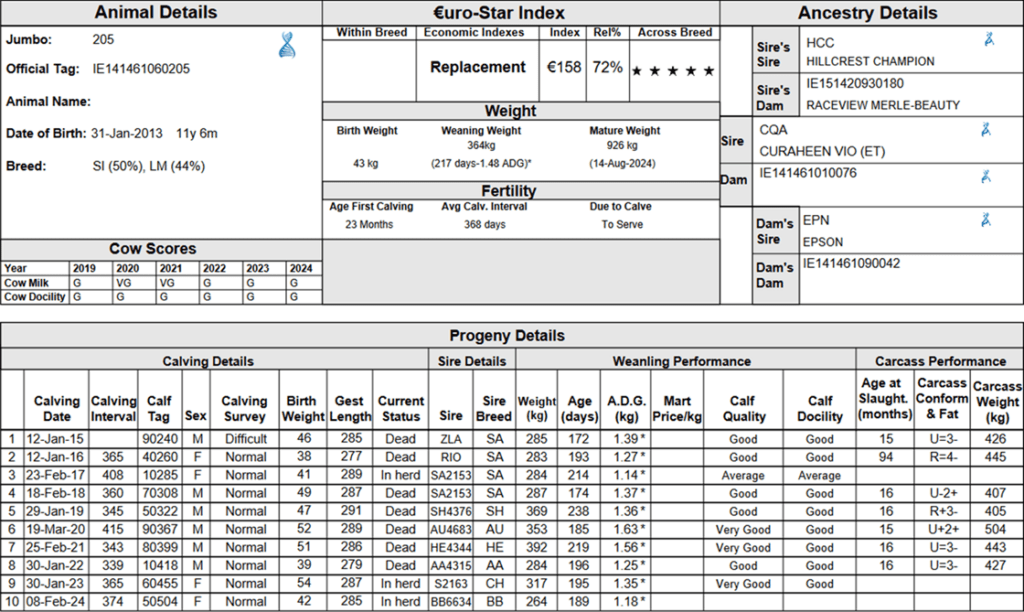The short answer is, no. Data from all animals is included in the Euro-Star evaluation process, provided it meets certain criteria, such as:
- The animal is part of a contemporary group so that its performance can be compared to herdmates.
- The data is within the bounds of what is biologically possible e.g. a cow with a calving interval of 200 days or a calf with an average daily weight gain of 3kg/day is not possible and would be excluded from an evaluation.
Provided there is data recorded on an animal as well as its herdmates and the data is realistic, it is included in an evaluation, regardless of the animal’s age.
What animals are used to calculate the Euro-Star percentiles?
To ensure that the star-ratings are reflective of the current genetic direction of the national herd, only animals born in the last 5 years are included to generate the star-rating percentiles or ‘cut-offs’.
For example, the population of animals that will be used in the next evaluation (i.e. 24th Sept.) will be limited to those born since 01st Jan 2019. The January 2025 evaluation will see the cut-off date move on to the 01st Jan 2020, with the 2019 born animals dropping out of the percentiles calculation.
How do older animals have a star-rating then?
Every animal is assigned a star rating on each index and trait depending on where their own value sits in the percentiles. Figure 1 shows the current Replacement Index across breed percentiles.

Animals at €126 or above are 5-stars (top 20%) based on animals born since 01st Jan 2019. Animals born before 2019 still have a star rating, even though they are not in the population used to calculate the stars. Figure 2 shows the HerdPlus Suckler Cow Report page for a 2013 born cow. She has a Replacement Index of €158, which makes her 5-stars.

This cow has accumulated a lot of data over her lifetime. All of this data and that of her progeny is included in the ICBF evaluations, provided it meets the criteria mentioned earlier. This data has and will continue to influence this cow’s Replacement Index. Apart from the percentiles calculation, the evaluation treats her exactly the same as a 2024 born animal.
